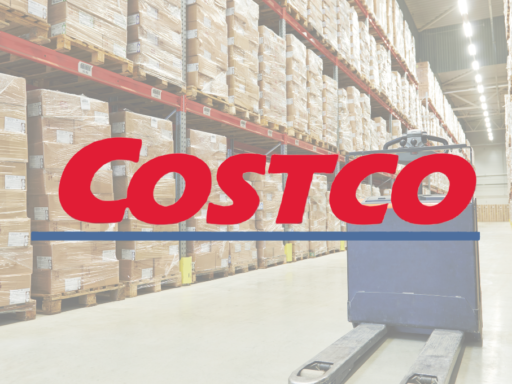H&M Group, a global leader in fashion retail, has demonstrated a steadfast commitment to sustainability, integrating environmental and social considerations into its core business operations. The company’s 2024 Annual and Sustainability Report highlights significant progress toward its ambitious goals, reflecting a comprehensive approach to sustainable fashion.
Sustainability Strategy and Goals
H&M’s sustainability framework is structured around several key pillars:
Net Zero and Carbon Emissions
- Scope 1 and 2 Emissions: Achieved a 41% reduction compared to the 2019 baseline, nearing the 56% reduction target set for 2030.
- Scope 3 Emissions: Reduced by 24%, encompassing emissions from the supply chain and product lifecycle.
- Renewable Energy Transition: Utilized 96% renewable electricity in 2024, aiming for 100% by 2030.
Material Sourcing and Circular Economy
- Sustainable Materials: 89% of product materials were recycled or sustainably sourced, with recycled materials constituting 29.5%, almost reaching the 30% target for 2025 ahead of schedule.
- Circular Initiatives: Expanded second-hand retail options to 26 markets through partnerships like Sellpy, promoting garment reuse and extending product lifecycles.
Water Stewardship
- Freshwater Consumption: Achieved a 9.5% reduction in garment suppliers’ freshwater usage, approaching the 10% reduction target for 2025.
Deforestation and Biodiversity
- Coal Phase-Out: Decreased the number of garment suppliers using on-site coal boilers to 27 in 2024, down from 46 in 2023, with plans to eliminate coal usage entirely by 2026.
- Feather Sourcing: Committed to phasing out virgin down and feathers by the end of 2025, with 90% currently sourced from recycled materials.
Human Rights and Responsible Sourcing
- Leadership Diversity: Women held 65% of leadership positions across H&M Group in 2024, reflecting the company’s dedication to gender equality.
- Worker Welfare: Renewed the Global Framework Agreement with IndustriALL Global Union and Swedish trade union IF Metall, safeguarding the interests of over one million workers.
Community and Social Impact
- Social Programs: Collaborated with organizations like Women Win’s ONSIDE Fund to support initiatives addressing inequality through movement-based projects.
Governance and Transparency
- Recognition: Ranked 11th on Forbes’ World’s Top Companies for Women list for the second consecutive year, highlighting H&M’s commitment to fostering an inclusive workplace.
Technology and Innovation
- Material Innovation: Partnered with Syre, investing $600 million to develop scalable, recyclable polyester, aiming to revolutionize sustainable material sourcing in fashion.
Source: Vogue Business, October 2024
Global Partnerships and Advocacy
- Industry Collaboration: Engaged in initiatives like the Re-viste project in Spain, aiming to enhance textile waste collection and recycling ahead of forthcoming EU regulations.
Source: Reuters, October 2024
Key Sustainability Innovations and Technologies
H&M continues to innovate in sustainable fashion:
- Recycled Polyester: Collaborated with Syre to develop infinitely recyclable polyester, addressing industry challenges in sustainable material sourcing.
- Second-Hand Market Expansion: Invested in platforms like Sellpy to promote garment reuse, aligning with circular economy principles.
Source: Vogue Business, October 2024
Measurable Impacts
The company’s sustainability efforts have yielded tangible results:
- Financial Performance: Net sales totaled SEK 234 billion in 2024, a slight decrease from SEK 236 billion in 2023, attributed to market fluctuations and strategic store closures.
- Profitability: Operating profit increased to SEK 17.3 billion in 2024, up from SEK 14.5 billion in 2023, driven by cost controls and supply chain efficiencies.
Challenges and Areas for Improvement
Despite progress, H&M faces ongoing challenges:
- Supply Chain Emissions: Addressing Scope 3 emissions remains complex due to the extensive and diverse nature of the supply chain.
- Material Sourcing: While the company is making strides toward using more sustainable materials, it still faces challenges in sourcing the volume needed to meet its ambitious goals.
- Consumer Perception: Engaging consumers in sustainable practices and ensuring transparency continue to be areas for development.
Future Plans and Long-Term Goals
Looking ahead, H&M has outlined several strategic objectives:
- Circular Business Models: Expand initiatives like second-hand retail and garment recycling to promote a circular fashion economy.
- Sustainable Material Sourcing: Achieve 100% recycled or sustainably sourced materials by 2030, with intermediate targets of 30% recycled materials by 2025.
- Decarbonization: Continue investing in renewable energy and supply chain decarbonization projects to meet science-based targets.
Comparisons to Industry Competitors
In comparison to industry peers:
- Sustainable Material Usage: H&M’s 89% sustainable material sourcing in 2024 surpasses many competitors, positioning the company as a leader in sustainable fashion.
- Emission Reductions: The 41% reduction in Scope 1 and 2 emissions demonstrates H&M’s commitment to decarbonization, aligning with global climate goals.
Source: H&M Group Sustainability Progress Report 2024
Our Thoughts
H&M’s comprehensive sustainability strategy reflects a genuine commitment to environmental stewardship and social responsibility. The company’s progress in material sourcing, emissions reduction, and circular initiatives positions it as a leader in sustainable fashion. However, addressing supply chain emissions and engaging consumers in sustainability efforts remain ongoing challenges. By continuing to innovate and collaborate, H&M has the potential to drive significant positive change in the fashion industry, setting a benchmark for others to follow.






